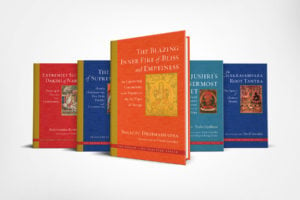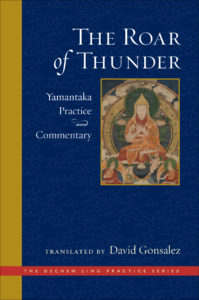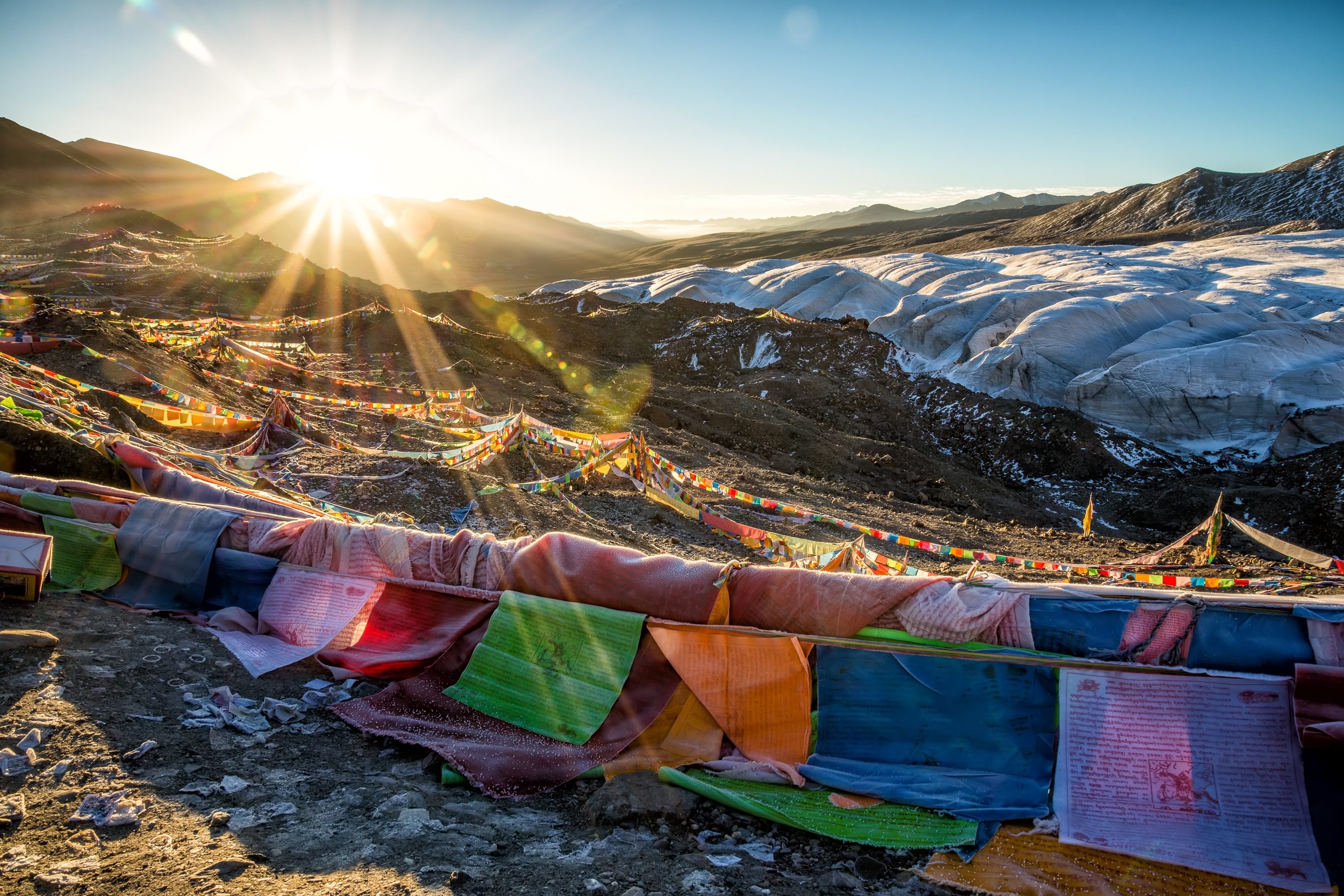
The Dechen Ling Practice Series
Meet the Translator
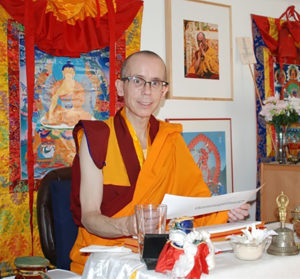 David Gonsalez (Losang Tsering) was the translator of numerous sadhanas and texts and served for many years as the personal translator and attendant for Gen Lobsang Chophel. He was the president of Dechen Ling, a nonprofit organization that worked with the Tibetan community in exile to establish their monasteries and traditions, preserving, continuing, and translating the wisdom of Tibetan Buddhist culture. Venerable Gen Losang Tsering passed away in 2014.
David Gonsalez (Losang Tsering) was the translator of numerous sadhanas and texts and served for many years as the personal translator and attendant for Gen Lobsang Chophel. He was the president of Dechen Ling, a nonprofit organization that worked with the Tibetan community in exile to establish their monasteries and traditions, preserving, continuing, and translating the wisdom of Tibetan Buddhist culture. Venerable Gen Losang Tsering passed away in 2014.
Explore the Series
LATEST RELEASE
The Blazing Inner Fire of Bliss and Emptiness
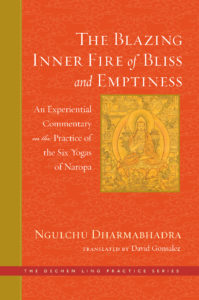 The Blazing Inner Fire of Bliss and Emptiness presents lucid translations of a pair of detailed commentaries by the famed Tibetan tantric master Ngulchu Dharmabhadra (1772–1851), illuminating a set of extremely secret and restricted tantric practices of highest yoga tantra. The first of these commentaries details the practices of the Six Yogas of Naropa, one of the most celebrated and revered systems of completion-stage practice in Tibet. Ngulchu Dharmabhadra’s commentary is unique in that it presents the Six Yogas within the context of Vajrayogini practice, making this book a perfect companion piece to The Extremely Secret Dakini of Naropa. Also contained in this book is Ngulchu Dharmabhadra’s lucid and concise commentary on the First Panchen Lama’s (1570–1662) famous Supplication for Liberation from [Fear of] the Perilous Journey of the Intermediate State. The prayer—a beautiful literary contribution from the First Panchen Lama in its own right—invokes the immediacy of death and the potential to use the process of dying as an opportunity for liberation.
The Blazing Inner Fire of Bliss and Emptiness presents lucid translations of a pair of detailed commentaries by the famed Tibetan tantric master Ngulchu Dharmabhadra (1772–1851), illuminating a set of extremely secret and restricted tantric practices of highest yoga tantra. The first of these commentaries details the practices of the Six Yogas of Naropa, one of the most celebrated and revered systems of completion-stage practice in Tibet. Ngulchu Dharmabhadra’s commentary is unique in that it presents the Six Yogas within the context of Vajrayogini practice, making this book a perfect companion piece to The Extremely Secret Dakini of Naropa. Also contained in this book is Ngulchu Dharmabhadra’s lucid and concise commentary on the First Panchen Lama’s (1570–1662) famous Supplication for Liberation from [Fear of] the Perilous Journey of the Intermediate State. The prayer—a beautiful literary contribution from the First Panchen Lama in its own right—invokes the immediacy of death and the potential to use the process of dying as an opportunity for liberation.
Together, these works present the reader with a vast and profound vision of spiritual transformation—one in which every aspect of human experience can be used as an opportunity for transcendence and spiritual liberation.
The Secret Revelations of Chittamani Tara
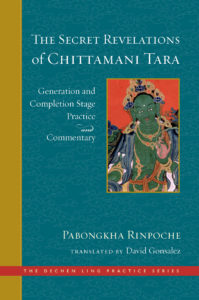 Chittamani Tara is the Highest Yoga Tantra aspect of Green Tara, one of the most popular yidams in Tibetan Buddhism. In The Secret Revelations of Chittamani Tara: Generation and Completion Stage Practice and Commentary, beloved teacher Pabongkha Rinpoche shares the teachings that his teacher, Gargyi Wangpo Takphu Dorje Chang, received directly from Chittamani Tara herself.
Chittamani Tara is the Highest Yoga Tantra aspect of Green Tara, one of the most popular yidams in Tibetan Buddhism. In The Secret Revelations of Chittamani Tara: Generation and Completion Stage Practice and Commentary, beloved teacher Pabongkha Rinpoche shares the teachings that his teacher, Gargyi Wangpo Takphu Dorje Chang, received directly from Chittamani Tara herself.
The Secret Revelations of Chittamani Tara contains many profound oral instructions that are not easily found elsewhere, including one of the most powerful and practical discourses on the completion stage to be found anywhere in English translation. Rinpoche has supplemented his commentary with teachings from the Gaden Hearing Lineage as well as the general tantric teachings of the Gelug tradition. Also included are the Chittamani Tara self-generation sadhana, the ganachakra offering for Chittamani Tara, and three beautiful and moving praises and prayers to Tara composed by masters in the tradition.
The Source of Supreme Bliss
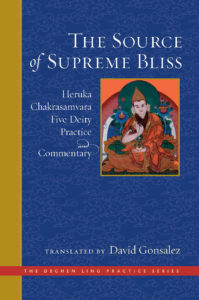 The Source of Supreme Bliss contains the first English translations of important commentaries on the Highest Yoga Tantra system of the Heruka Chakrasamvara five deity practice.
The Source of Supreme Bliss contains the first English translations of important commentaries on the Highest Yoga Tantra system of the Heruka Chakrasamvara five deity practice.
Included is a lucid, practical, and deeply profound explanation of the generation stage by Ngulchu Dharmabhadra. This is followed by an extremely rare and profound commentary by the First Panchen Lama Losang Chökyi Gyaltsen on the completion stage, along with a commentary on how to perform a proper Chakrasamvara retreat. The second half of the book comprises translations of the ritual texts associated with the commentaries.
Indispensable for anyone who undertakes this practice, The Source of Supreme Bliss will also provide rich and profound insights for those interested in Highest Yoga Tantra.
The Roar of Thunder
An essential collection of texts and instructions for the practice of the wrathful wisdom deity Yamantaka. With pith instructions from famed siddhas and masters of the Gelug school, The Roar of Thunder offers an unprecedented panoramic perspective on the entire spectrum of Yamantaka practice. Also included in this amazing volume is the extensive sadhana of the Solitary Hero composed by Pabongkha Rinpoche that can be used as a reference to facilitate a more thorough understanding of the commentaries.
The Chakrasamvara Root Tantra
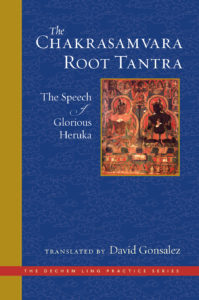 The Chakrasamvara Root Tantra is presented here in a beautiful, lyrical translation, perfect for recitation.
The Chakrasamvara Root Tantra is presented here in a beautiful, lyrical translation, perfect for recitation.
A key text for one of the most important Buddhist tantric traditions, the Chakrasamvara Root Tantra has been passed down to us from the ancient mahasiddhas and yogis of India. This foundational ritual text is one of the earliest of the yogini tantras—tantric scriptures that emphasize female deities. This melodic translation by David Gonsalez maintains the poetic structure of the original, making it ideal for practitioners and harmonious to recite. It is at once an object of devotion, a profound instruction, and a beautiful poem meant to inspire spiritual seekers.![]()
The Extremely Secret Dakini of Naropa
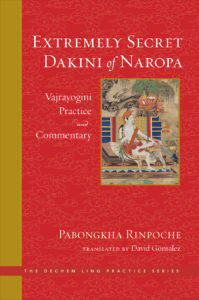 The Extremely Secret Dakini of Naropa has become the basis for almost every subsequent Vajrayogini commentary in the Gelug tradition. Kyabje Pabongkha’s commentary is both very thorough in its presentation and deeply inspiring, providing rich detail on essential elements of Vajrayogini practice: All eleven yogas of the generation stage; the transference of consciousness; tsok offering; left-sided conduct; and many other auxiliary practices.
The Extremely Secret Dakini of Naropa has become the basis for almost every subsequent Vajrayogini commentary in the Gelug tradition. Kyabje Pabongkha’s commentary is both very thorough in its presentation and deeply inspiring, providing rich detail on essential elements of Vajrayogini practice: All eleven yogas of the generation stage; the transference of consciousness; tsok offering; left-sided conduct; and many other auxiliary practices.
There is also a stunning explanation of the completion stage that provides many extraordinarily profound methods unique to the practice of Vajrayogini. The second half of the book contains several sadhanas for the practice of Vajrayogini, including six-session guru yoga as well as two sadhanas on the transference of consciousness.
The Essence of the Vast and Profound
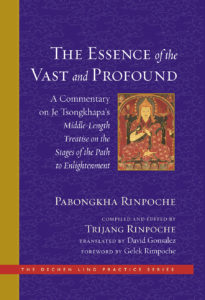 The Essence of the Vast and Profound will soon find its place as one of the greatest lamrim commentaries ever given.
The Essence of the Vast and Profound will soon find its place as one of the greatest lamrim commentaries ever given.
Drawn from teachings by Pabongkha Rinpoche, which were given over the course of thirty-six days in 1934 in Tibet’s capital city of Lhasa, The Essence of the Vast and Profound masterfully weaves together Tsongkhapa’s Middle-Length Treatise on the Stages of the Path to Enlightenment, the Second Panchen Lama’s Swift Path, and the Third Dalai Lama’s Essence of Refined Gold. Rinpoche offers wise and compassionate guidance on such crucial subjects as how to rely on a spiritual teacher, how to develop certainty on the path, what it means to take refuge, how to understand karma, and the importance of compassion—explaining the entire spectrum of the Buddhist path, and also inspiring the reader to follow it.
Manjushri’s Innermost Secret
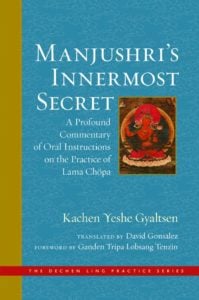 Highly informative and deeply moving, Manjushri’s Innermost Secret contains the entire path to enlightenment that was transmitted in direct communication with Lama Tsongkhapa by the wisdom-buddha Manjushri. This invaluable commentary provides an authoritative illumination of the Lama Chöpa ritual text for practitioners and is widely revered and commented upon in its own right.
Highly informative and deeply moving, Manjushri’s Innermost Secret contains the entire path to enlightenment that was transmitted in direct communication with Lama Tsongkhapa by the wisdom-buddha Manjushri. This invaluable commentary provides an authoritative illumination of the Lama Chöpa ritual text for practitioners and is widely revered and commented upon in its own right.
Designed for those who have received the highest yoga tantra empowerment, these texts swiftly guide the spiritual practitioner to the state of complete enlightenment through the full spectrum of teachings on the lamrim and mind training (lojong). It also covers the generation and completion stages of highest yoga tantra, all of which are grounded in deep, heartfelt faith and devotion for one’s spiritual guide.
In addition to the Lama Chöpa ritual text itself, this book also includes the First Panchen Lama’s root text on Ganden Mahamudra, the supplication verses to the lineage gurus, and the Fifty Verses of Guru Devotion composed by the Indian saint Ashvagosha.![]()
Meet the Authors
Dechen Nyingpo Rinpoche (1878–1941) received his geshe degree at Sera Monastic University. He was the root lama of both tutors of the present Dalai Lama and profoundly influenced many of the Gelug lamas who have been instrumental in bringing Dharma to the West.
Ngulchu Dharmabhadra (1772–1851) learned reading and writing from his uncle Genpo Lhabu and was later known for his beautiful handwriting. Dharmabhadra composed many important texts covering subjects such as sadhanas, commentary on empowerment, mind-training, poetry, grammar, and letter writing.
Losang Chökyi Gyaltsen (1570–1662) was the fourth Panchen Lama of the Gelug school of Tibetan Buddhism and the first to be accorded this title during his lifetime. He was the teacher of the 5th Dalai Lama, who gave him Tashilhunpo Monastery as a living place and declared him to be an incarnation of Amitābha. He was a prolific writer and teacher, composing more than three hundred works. When he died the Fifth Dalai Lama began the tradition of recognizing his reincarnation and he reserved the title of Panchen (short for Pandita chen po or ‘Great Scholar’), which had previously been a courtesy title for all learned lamas, exclusively for him, and this title has continued to be given to his successors and, posthumously, to his predecessors starting with Khedrup Gelek Pelzang, the First Panchen Lama.
Tsongkhapa Losang Dragpa (1357–1419) was one of the finest scholar-practitioners in Tibetan Buddhism. Renowned for both his written works and his meditative accomplishments, he founded the Gelug school, which produced the lineage of the Dalai Lamas.
Gelek Rimpoche (1939-2017) is considered to be one of the great Tibetan Buddhist masters and scholars of the 20th and 21st Centuries. Among the last generation of lamas educated in Drepung Monastery before the Communist Chinese invasion of Tibet, Gelek Rimpoche was forced to flee to India in 1959. He later edited and printed over 170 volumes of rare Tibetan manuscripts that would have otherwise been lost. He was director of Tibet House in Delhi, India; a radio host at All India Radio; he taught Buddhist practitioners around the world; and in 1988 he founded Jewel in Michigan, having already established Jewel Heart centers in Europe and Asia.
Triang Rinpoche (190?–1981) was recognized as one of the foremost Tibetan Buddhist Masters of our time and was the tutor and root guru of His Holiness the Fourteenth Dalia Lama. He was revered for his teaching and activities, particularly in the tradition of Je Tsongkhapa. Triang Rinpoche is credited with helping the Dharma flourish in the West through his teachings.
Kachen Yeshe Gyaltsen (1713–93) was the tutor of the Eighth Dalai Lama and the founder of Tsechok Ling Monastery in Lhasa.
Ganden Tripa Lobsang Tenzin Rinpoche (1934– ) was appointed the 104th Ganden Tripa, spiritual leader of the Gelug school of Tibetan Buddhism, in April 2017. He has taught widely in India and the West, including summer courses at Deer Park Buddhist Center in Wisconsin, taking over after the retirement of his teacher, Geshe Lhundup Sopa. Rinpoche is also Spiritual Director at Do Ngak Kunphen Ling in Redding, Connecticut.

